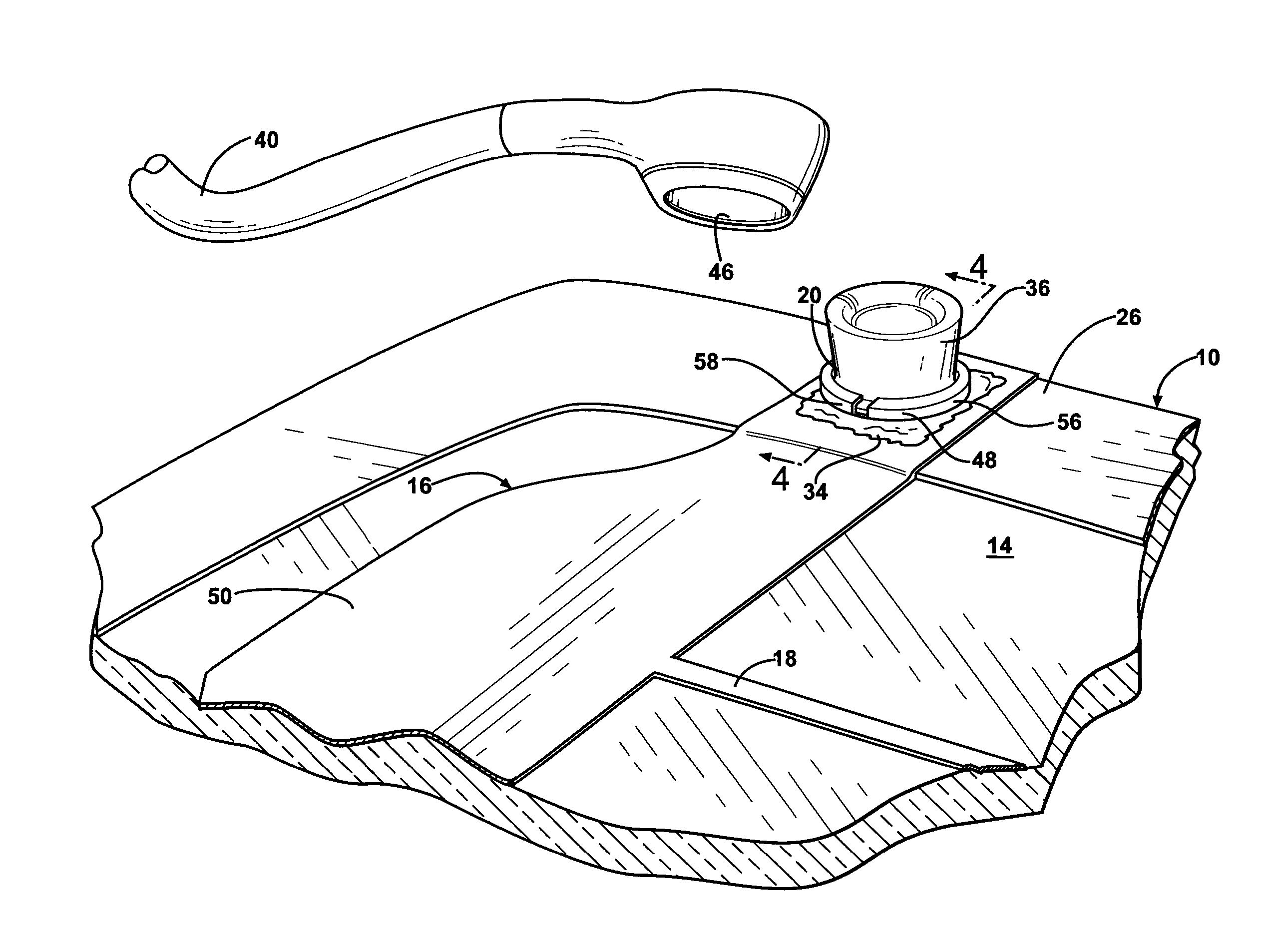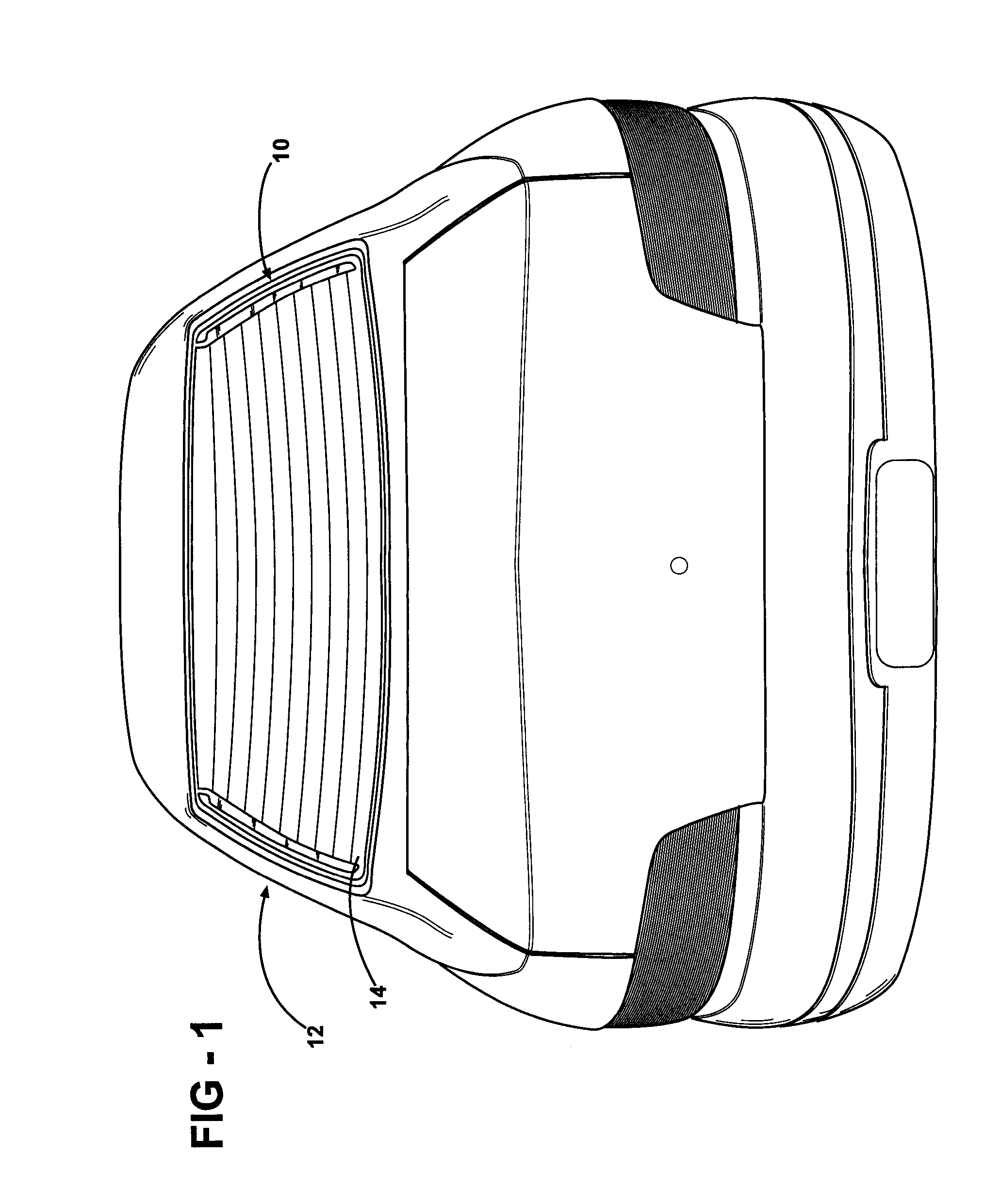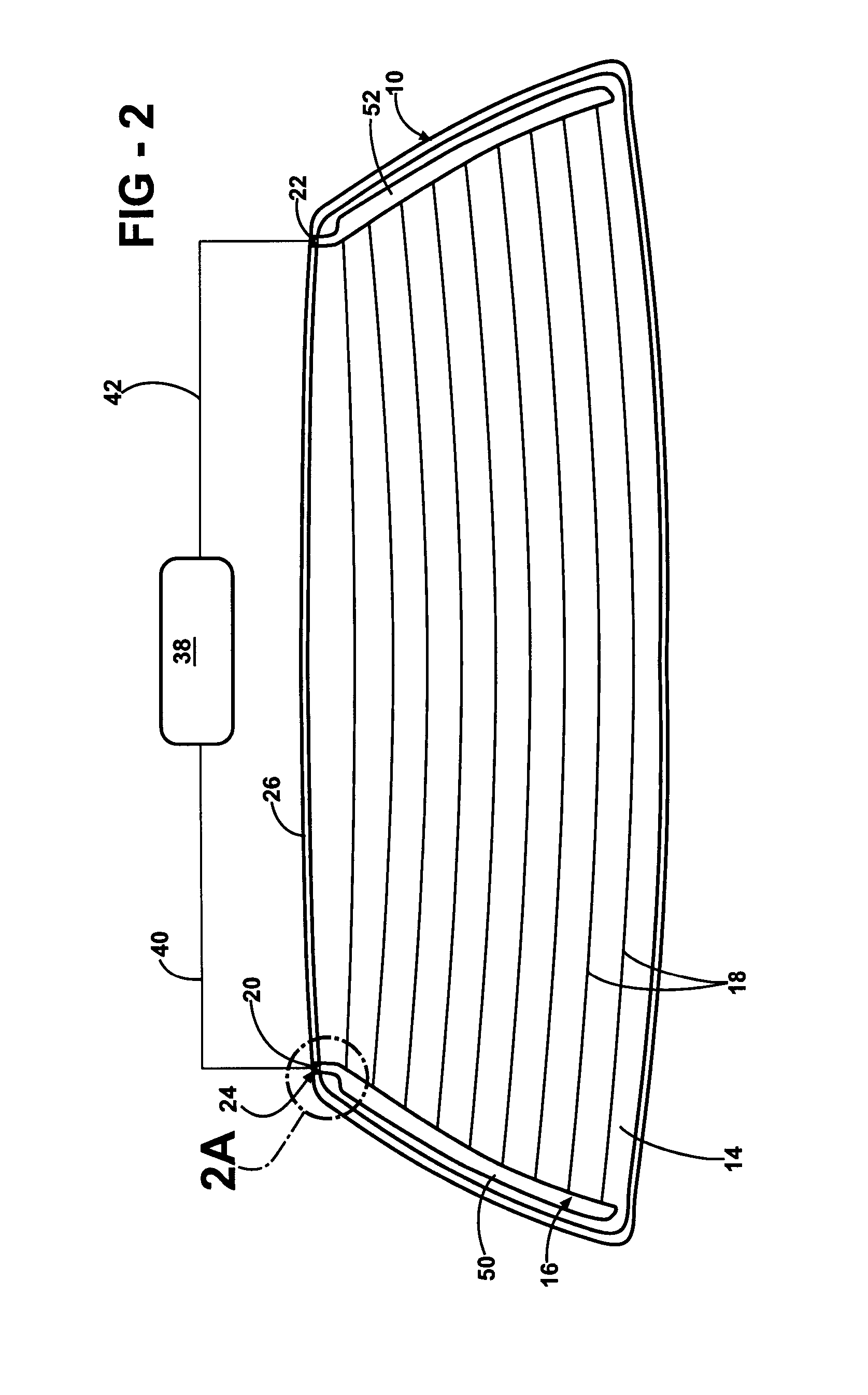Electrical Connector For A Window Pane Of A Vehicle
a technology for electrical connectors and window panes, applied in the direction of coupling device connections, soldering apparatus, manufacturing tools, etc., can solve the problems of poor solderability, environmental contamination, cracking or other damage to substrates, etc., to reduce mechanical stress, reduce bending, breakage or delamination, and resist delamination from the substrate
- Summary
- Abstract
- Description
- Claims
- Application Information
AI Technical Summary
Benefits of technology
Problems solved by technology
Method used
Image
Examples
examples
[0051] Test plaques were made including the glass substrate 14, the electrical conductor 16, the electrical connector 20 including the layer of solderable metal 32, and the layer of solder 34. Half of the test plaques include glass substrates 14 with a ceramic layer 26, and the electrical conductor 16 was bonded to the glass substrate 14 over the ceramic layer 26. However, the results were the same for both configurations with and without the ceramic layer 26 present. The electrical conductor 16 was formed from silver paste for all of the plaques, and the silver paste was fired onto the substrate 14 to form the electrical conductor 16. The layer of solderable metal 32 was formed on the connector 20 by vacuum ion plating. The connector 20 was soldered to the conductor 16 through the layer of solder 34. The electrical connector 20, the layer of solderable metal 32, and the layer of solder 34 were formed from metals as indicated in Table 1. The glass substrate 14 was formed from soda-l...
PUM
| Property | Measurement | Unit |
|---|---|---|
| Percent by mass | aaaaa | aaaaa |
| Percent by mass | aaaaa | aaaaa |
| Percent by mass | aaaaa | aaaaa |
Abstract
Description
Claims
Application Information
 Login to View More
Login to View More - R&D
- Intellectual Property
- Life Sciences
- Materials
- Tech Scout
- Unparalleled Data Quality
- Higher Quality Content
- 60% Fewer Hallucinations
Browse by: Latest US Patents, China's latest patents, Technical Efficacy Thesaurus, Application Domain, Technology Topic, Popular Technical Reports.
© 2025 PatSnap. All rights reserved.Legal|Privacy policy|Modern Slavery Act Transparency Statement|Sitemap|About US| Contact US: help@patsnap.com



